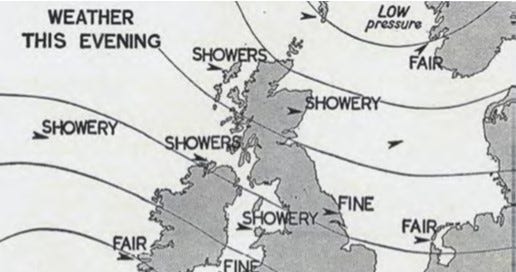Last week, I happened to be on a train when suddenly seemingly everyone’s phone bleeped out an alert. It was entertaining to watch people’s reactions, ranging from nonchalantly saying it was probably to do with the incoming storm to someone nearby frantically tapping at their screen to make the message go away. The alert began:
Severe Alert. Issued by the UK and Scottish Governments. A RED warning for wind has been issued. Extremely strong winds associated with Storm Éowyn are expected to cause significant disruption from 10am on Friday 24 January 2025….
Met Éireann also issued a red warning and the main impacts turned out to be in Ireland, including hundreds of thousands of people temporarily without power. A recorded gust of 114mph broke national records there.
The alert was from a UK government system to provide warnings of life-threatening events and for many people this was their first real experience of the service since it was introduced about two years ago. It relies on proximity to mobile phone masts to provide targeted warnings.
This is just one of the latest ways of issuing warnings and for weather forecasts the Met Office and BBC websites note that the first regular radio broadcasts began just over a century ago.
Compared to checking in a daily newspaper, this was a huge step forward and television-based forecasts followed on some twenty five years later. However, the early broadcasts must have been rather dry, simply showing a static map described by a hidden narrator, so when the first presenters appeared five years later they soon became household names. The Met Office notes that
…isobars and fronts were pre-drawn in a quick drying black ink using a thick, felt-nibbed fountain pen. During the broadcast the forecaster used sticks of charcoal to demonstrate expected movements and changes.
First regular television weather chart 29 July 1949 (credit: Met Office)
Some thirty years later, the first computer generated maps were broadcast in the 1980s and internet-based forecasts became available the following decade. In the early days, slow, clunky dial-up modems limited what could be presented, but broadband has of course now opened up many new possibilities, including videos, interactive maps and animations.
From around 2005-06, social media provided another route for issuing warnings, of which meteorological services again soon took advantage. Interestingly, you can still find the first ever Youtube video online called ‘Me at the zoo’, which was uploaded in 2005 by one of the co-founders and lasted all of 19 seconds. A couple of years later, mobile phones took a leap forward too with the iPhone perhaps the first to provide the underlying functionality that we now expect in a smartphone and Android-based devices following soon after.
However, broadcast warnings still have a vital role to play and flat screen televisions showing news and forecasts are now commonplace in many public places. This wasn’t always the case, though, which brings to mind an exchange in the BBC’s hit time-travelling drama Life on Mars. This was set in 1970s Manchester and a conversation in a pub went along the lines of:
Nelson: What is that…?
Gene: It's a television.
Nelson: In a pub? …
Gene: Tell him what you told me
Sam: I can make some brackets, I can put it on the wall, and watch the sports.
Nelson: In a pub?
Here, Nelson was the barman, Gene a 1970s detective and Sam was there against his will from 2006.
These multiple communication routes are all part of a drive to get warnings out by as many means as possible to those who need them and it’s remarkable how much has changed in recent years. Sometimes called last mile connectivity or an end-to-end approach, it’s a challenge I’ve considered on flood projects in the UK, Africa and Asia and is every bit as interesting as figuring out how to generate forecasts in the first place.
However, you also have to wonder what a visitor from the 2050s would make of our shiny new technology?






For me, it would be something of a relief to find the phone alert was a weather warning.... and not short notice that some bad state actor was about to plant large mushrooms around the country!
:- )
I'm that second person. When my phone starts beeping at me insistently my first reaction is to make it stop. So all 3 alerts got cancelled before I had time to read them. Now the two governments have this power to invade my phone I expect them to dilute its usefulness immediately with overuse.